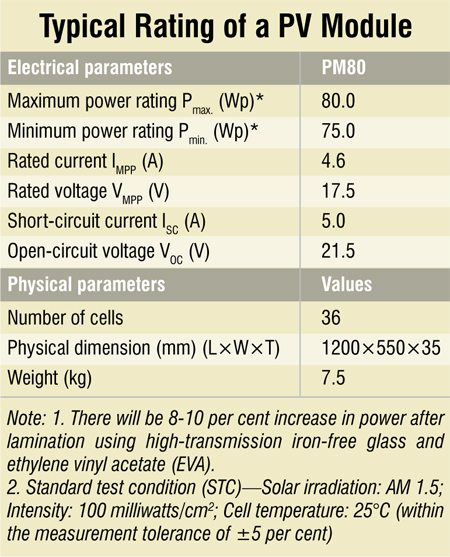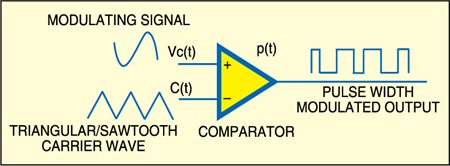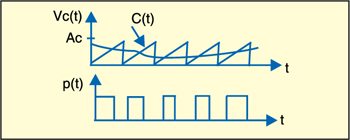PMAX: Maximum power in watts (PMAX = VMP × IMP)
VOC: Open-circuit voltage (maximum voltage with module output open circuit)
VMP: Voltage at which the module produces the highest power (also called operating voltage)
IMP: Current at which the module produces the highest power (also called operating current)
ISC: Short-circuit current (maximum current with output shorted)

Minimum acceptable VMP voltage rating. To charge a 12V battery, a PV module with higher VMP in the range of 17.5V-18.5V will provide improved MPPT and battery charging performance. For 24V or 48V batteries, these voltages should be multiplied by 2 and 4, respectively.


Minimum acceptable IMP current rating. A preferred rule of thumb is that there should be at least 3 amperes of IMP per 100 amp-hours of battery capacity for proper battery charging. Thus it will be safe to select a PV module of 70W-80W PMAX rating to get an IMP of 4 to 4.5 amperes.
PV solar panel orientation
The parameters of a PV panel are specified by the manufacturer at 20oC cell temperature for the condition that each one square metre of its area receives ‘peak sun’ power of 1000W, thus providing 1000 Wh per m² (1 kWh/m²)—representing the solar energy received in one hour on a cloudless summer day when the PV panel is directed towards the sun. In practice, the power output of a photovoltaic solar panel is affected by its orientation with respect to the sun and atmospheric conditions.
The best tilt angle is usually equal to the latitude of the installation site. For example, New Delhi is at latitude 28°-36’ North and if solar panels are tilted at 28°-36’ (with respect to the horizon), these would be perpendicular to the sun twice a year. As the Indian sub-continent is towards north of the equator, the PV panel should face towards south in the azimuth. When you have a large number of PV panels, some of them may be tilted within a range of ±15° of the site-latitude, depending on whether a slight winter/summer bias is desirable in the system.
Insolation. This term is used for sunlight intensity in relation to the solar PV panel and is measured in equivalent full or peak sun hours (as explained above) during the day (24 hours). Even if the sun is in the horizon for a period exceeding twelve hours in a day, your PV panel may receive full sunlight only for four to seven hours or so. This is due to the fact that the panel will not be perpendicular to the sunrays most of the time and also there is earth atmospheric absorption.








very useful article for both student and electronics professional.